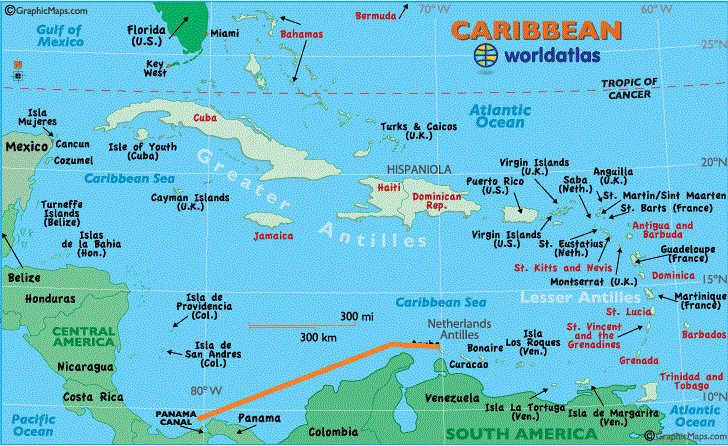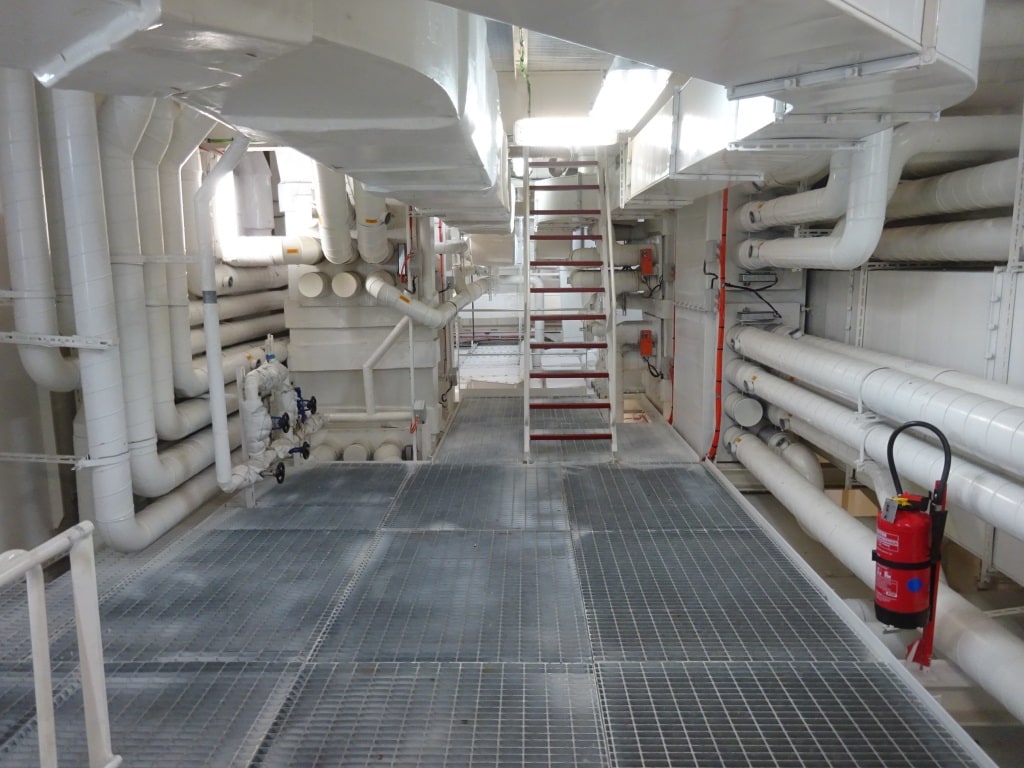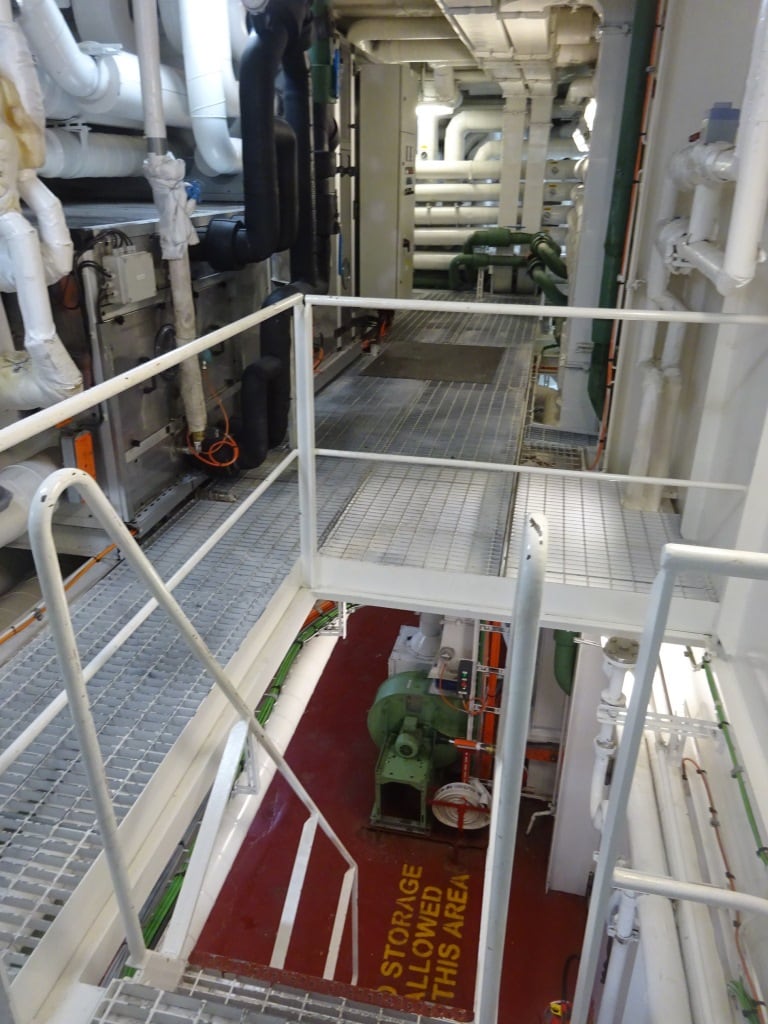Today we sailed the stretch of water above Colombia to get from Aruba to Panama. This is technically still the Caribbean Sea but somehow it does not feel like it as we are away from the Caribbean Islands and now more surrounded by countries which we consider to be part of Middle and South America. The course line is quite simple, we first follow the coast of Venezuela and then make a turn to the South west once above Colombia. Here we pass the main cities Barranquilla, quite close by, and further to the south, Cartagena which is a favorite stop on most eastbound Trans canals. Cruise ships seldom go to Barranquilla although it is a large port but it is a cargo port. I doubt there is much culture to enjoy around there otherwise a large cruise terminal would have been established long time ago. So for Colombia the focus remains on Cartagena.

The run from Aruba to Panama. We are now completely away from all the Caribbean Islands and that begs the question, is this area still really the Caribbean Sea.
Although it is in my opinion not really a part of the Caribbean Sea, the Trade winds do not pay much attention to that and it was blowing quite nicely during the day. Wind force 6 to 7 for most of the time, although we did not notice it very much as we were sailing with the wind. We could see it but not really feel it; large white caps on the waves but because the ship was sailing the same direction with about 16 knots, the relative wind on deck was reduced to about 12 knots. That is a nice gentle breeze which brings some cooler air onto the decks. (Danger is then of course that guests forget that the burning sun is still there and that can cause a few unpleasant side effects.)
Once we made the course change to south west, the swell went from straight in the stern to ¾ on the quarter and then we got the corkscrew roll once in a while. Luckily not too much, to become an inconvenience. As explained in the past, this corkscrew motion is caused by a swell which is not a really swell on the beam and not really a real swell on the stern. So the ship does not know if it should pitch or roll and have the stabilizers take care of it. The stabilizers can do most of the job but occasionally the angle shifts just a little bit from roll to pitch and then this cork screw motion sets in. If the angle then shifts back the stabilizers can handle it again.

The Ac Stations are in the center of the ship. Forward and aft of the funnel uptakes. Most of them run up from deck 4 to deck 7
Today I was on parade in the ship with 2 quartermasters in tow. Due to a new regulation, all storage rooms and lockers need a sign indicating what sort of structural fire protection it has, what it is allowed to be used for, how to store materials in it and list a few examples of what is allowed and what is not. I am combining that with my ship inspection and thus can supervise the QM’s at the same time while they install the signs/ stickers. While on parade I was stopped by a guest asking me why in some locations there are inside cabins and then suddenly there are none and are only blank walls. She had figured out where the funnel uptakes were running and thus the big question was what is behind the rest of the blank walls.

You might think that this is a lot of wasted space but the AC ducts cannot be smaller as they have to serve so many cabins and with always enough flow.
So I opened a door for her and she could look into a sort of factory going up 4 decks high. Behind the bulkheads are the Fan Rooms which take care of the A.C and the ventilation. These are not small rooms but large area’s 60 to 80 feet long 20 feet wide and open for 3 and four decks up and down. From large intakes on Deck 10 the fans suck in the outside air, send it through a cooling – A.C system, and then circulate it through the cabins. As a minimum requirement at least 75% of all air needs to be exchanged each hour (at home in your house it will not be more than 10% or maybe 25% with the garden doors open) and thus the fans work 24 hours a day, 7 days a week. And they better do as in the tropics it gets warm very quickly if you are sailing inside a tin can with no cooling.
Tomorrow we are in the Panama Canal. Schedule calls for a 05.00 hrs. arrival at the sea buoy and if all goes well then we should be past the sea buoy at the Pacific side before the 17.00 hrs. Most likely a bit earlier. Weather Mainly overcast and dry until we come to Gamboa and then there is a fair chance of showers and maybe something even more intense once past the Continental Divide.

November 14, 2017 at 1:12 am
Thank you so much for writing this blog. I have followed it for years and have learned so much while being thoroughly entertained by the way you present the information.
November 14, 2017 at 1:19 am
Thanks for the pictures of what’s behind the blank walls. I miss the days of being able to do serious touring of behind the scenes of cruise ships.
November 14, 2017 at 7:31 am
The “ virtual bridge” on 10 forward displays the azipods turning in opposite directions, is this accurate ?
Will we have one of your world stage presentations before we reach Sam Diego ?
November 14, 2017 at 1:40 pm
Thank you for reading my blog
Yes, that is correct when maneuvering. They then follow the individual settings for each Pod. At sea they act in synchronization because they are sterring the ship at the same time.
I have been scheduled for another talk on 20 November at 15.00 hrs.
Best regards
Capt. Albert